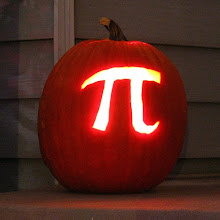The first step to finding alien life in our galaxy is working out what sort of planet an alien might call home. Almost 400 exoplanets - planets orbiting stars outside our solar system - have been spotted and now it’s time to take a closer look.
Dr Giovanna Tinetti from UCL is working on a new observation technique which will make it easier than ever to take a glimpse at the atmospheres of exoplanets, revealing further clues as to any potential inhabitants. Last month, her team of astronomers from UCL and NASA identified organic molecules in the atmosphere of a planet (the catchily named HD 189733b) nearly 63 light years away.
With these kinds of distances, bottling a sample of alien air to take back to the lab is not an option. Instead, astronomers analyse the radiation emitted from, or reflected by, a planet - a method known as spectroscopy. The various molecules in the planet's atmosphere absorb different wavelengths of radiation, leaving a telltale pattern in the overall spectrum of light captured by telescopes. By recognising these fingerprints, researchers can deduce the composition of the planet’s atmosphere.
‘We are interested in looking at light in the infrared end of the spectrum, so basically it’s thermal light emitted by the planet’, explains Tinetti. ‘The reason for this is that most of the molecules that we’re interested in, for example carbon dioxide or methane, have a much stronger signature in this part of the spectrum.’
Bringing spectroscopy back to Earth
Spectroscopy is nothing new, but has previously been confined to outer space. ‘Until now we’ve typically used space telescopes, in particular Hubble and Spitzer, for doing this type of measurement,’ says Tinetti. ‘It’s easier because you don’t have the Earth’s atmosphere in between you and the exoplanet.’
These space telescopes however have limited capability and are shared with many other researchers working on different projects, so there simply isn’t time to make the detailed observations needed to catalogue exoplanets. Instead, Tinetti and her team have optimised the infrared spectroscopy technique to produce accurate results without leaving our planet.
‘We’ve been trying to push our technique to work from the ground because we really want to concentrate all the capabilities of all the ground telescopes to keep working on the subject and have more and more measurements,‘ says Tinetti.
The method still needs a few tweaks, but in a few years’ time relatively small ground telescopes worldwide will be able to cast their gaze on far flung atmospheres, speeding up the search for habitable exoplanets. ‘The fact that we’ve now been able to reproduce results from space has opened a huge door,’ adds Tinetti.
Answers in the air
The composition of a planet’s atmosphere can tell us whether it could foster life, or even if life might already be there. Likewise, our own atmosphere could give away our presence to an alien observer .
Aliens equipped with similar telescopes to Tinetti's could easily spot water vapour and carbon dioxide in the air, suggesting that life is possible on Earth. More intriguing clues would be the presence of ozone and, if they were also looking in the visible end of the spectrum, oxygen.
‘They would be extremely surprised to see a huge signature of ozone, because ozone, like oxygen, is a very reactive type of molecule, and unless you have a constant supply in the planetary atmosphere it’s very rare that you have these molecules for a long time. So if you see a very strong signature it means that there’s a source. That would tell them that something very interesting was going on,’ comments Tinetti.
Our place in the universe
Exoplanet research isn't just about finding little green men. ‘It’s also about putting our planet and our solar system in general into a broader context – understanding how unique we are, if solar systems like ours are very frequent or very rare,’ adds Tinetti.
Even though our knowledge of other planets in our galaxy is increasing rapidly, there is still plenty left to discover. ‘One of the very interesting things about exoplanets is that they keep surprising you,’ she says. ‘No matter how many theoretical predictions you make, chances are you are not completely right.’
Ultimately, Tinetti hopes that a proposed space telescope known as THESIS will see the light of day and become the first space mission dedicated to characterising exoplanet atmospheres: ‘If we have space based mission like THESIS then we can do wonders… we shall see!’
This blog contain the most upto date science facets and articles Also it contain the most wired science of them all.
Geek sites
Blog Archive
-
▼
2010
(15)
-
▼
April
(10)
- Warp Speed
- Intel Core I7
- How Nanorobots Will Work
- Cool as a Jupiter
- Superheavy element 117 heaviest named element is o...
- F-35 Performs Its First Fully Vertical Landing
- Chemical computer that mimics neurons to be created
- Laser fusion test results raise energy hopes
- Chile earthquake: Shock effect on Earth's axis
- Alien spotting comes down to Earth
-
▼
April
(10)
Pages
Labels
- acids (1)
- alternative energy (1)
- astronomy (2)
- aviation (1)
- biology (2)
- chemistry (3)
- Earth (1)
- Personal (1)
- physics (5)
- technology (5)
2010 - Hyper Science is proudly powered by Blogger
Blogger Template created by Anshul
Design By Templatelite.com
Blogger Template created by Anshul
Design By Templatelite.com

0 comments:
Post a Comment